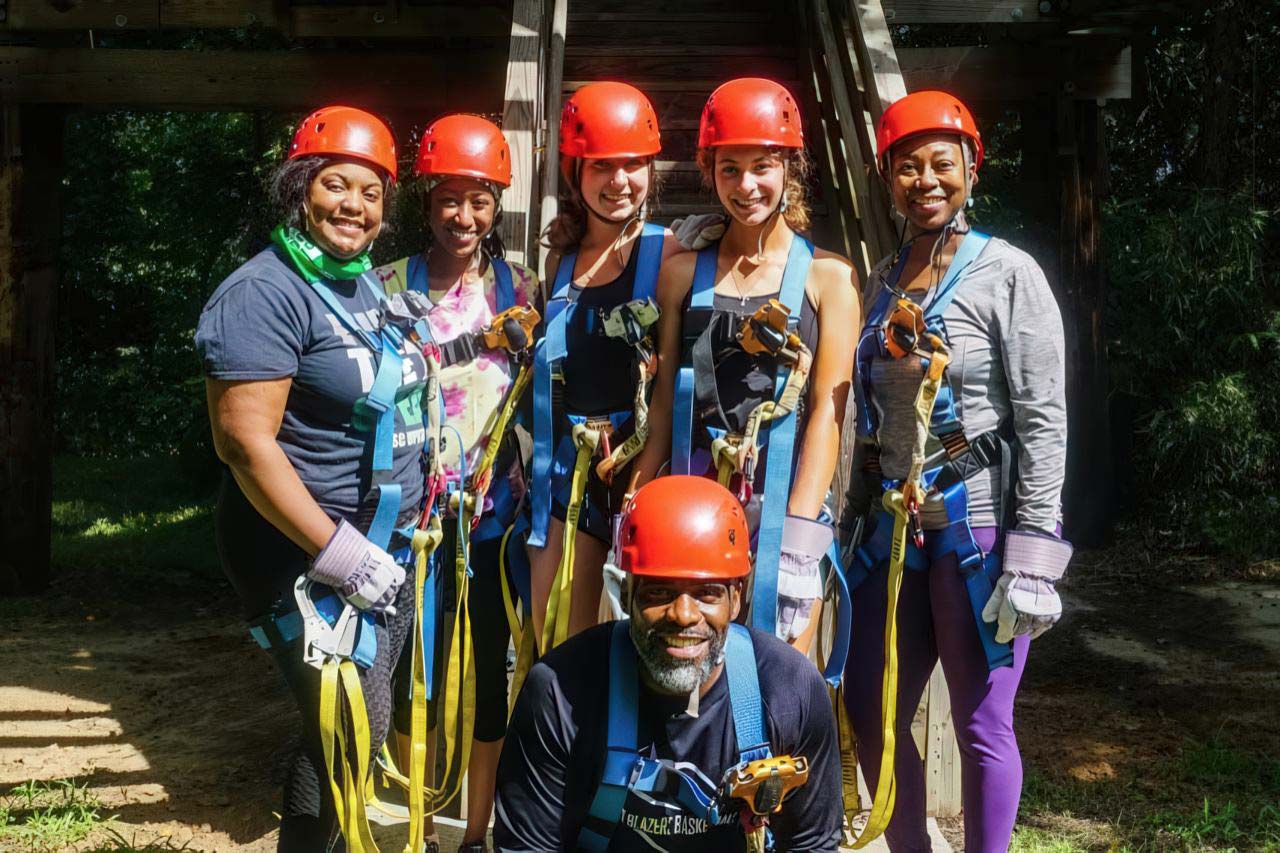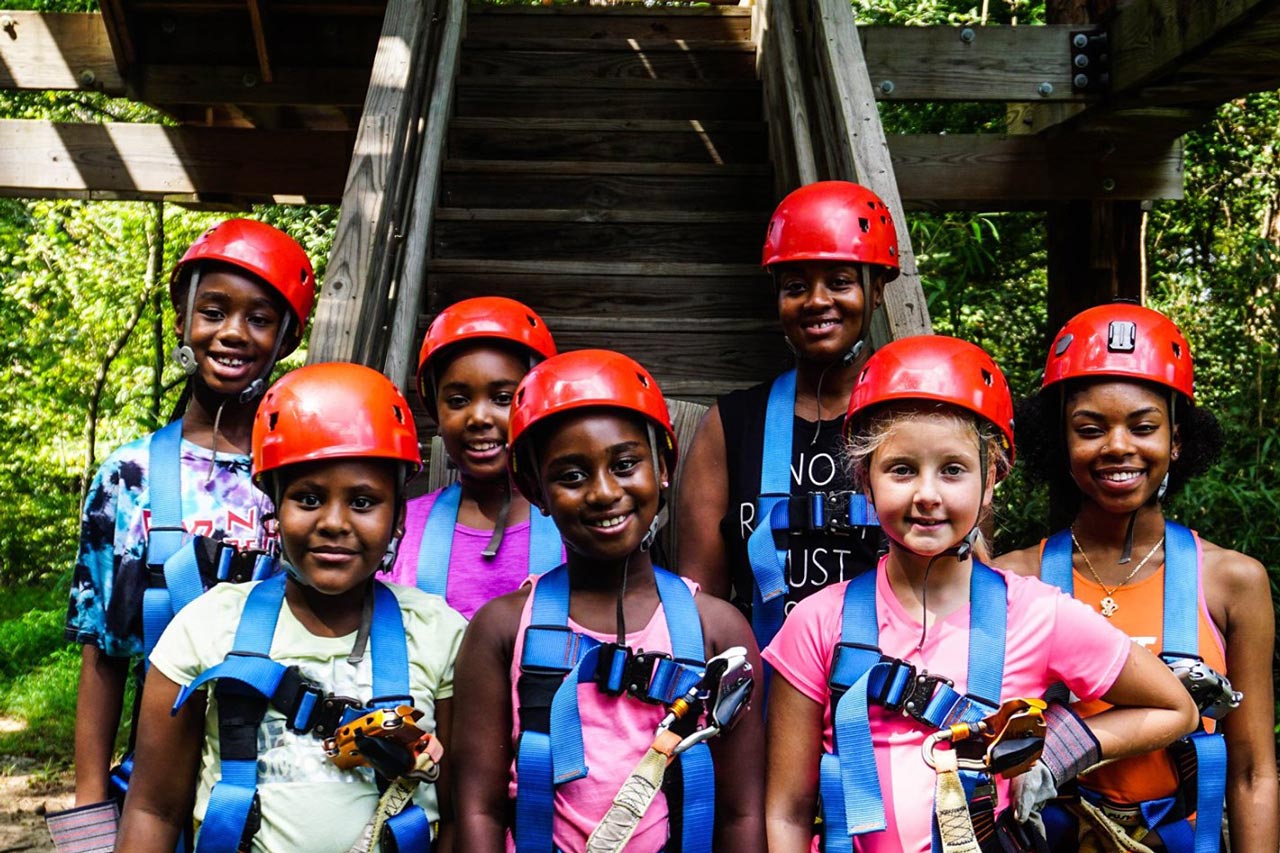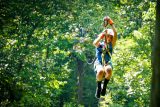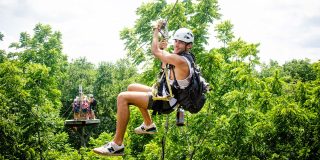Is Ziplining Safe?
Zipline Safety
4 years ago
For many people, the idea of riding through the treetops on a cable, trolley, and harness can be a bit intimidating. Naturally, the first question people ask about ziplining is “is it safe?” In short, as long as your chosen outfitter is following the standards set by their accrediting bodies, then their course and practices are going to be at the safest known industry standards. But to help you narrow it down, there are four main things you should be informed of for your tour: inherent risk, the course, the equipment, and the staff.

Inherent Risk Disclaimer
Like all outdoor adventures, ziplining comes with inherent risk. Inherent risk is a risk that is present simply because of the nature of the activity. Even with the best practices, risk cannot be completely removed from many activities, like ziplining, but can be significantly reduced. Accidents do unfortunately happen in the zipline industry, ranging from minor injuries like cuts and scrapes to serious injuries that can sometimes be fatal. It is because of the risk involved that outfitters must meet or exceed industry standards.
The Course
Quality courses are built according to approved industry standards. From the types of cable we’re allowed to use down to how tight the bolts have to be, everything must meet the standard. The course at Canaan goes through different types of inspections throughout the year. A daily inspection by guides offers a broad overview of what is to be used that day. A quarterly inspection by the Program Director gives a thorough in-house look at the course. And finally, an annual third-party ACCT vendor inspection gives a detailed inspection that keeps us accountable to our standards. All three give us a look at the course and areas we need to repair or replace immediately or in the near future.

The Equipment
Just like the course, all of our equipment must adhere to ACCT standards. The typical standard is that equipment should be able to hold 5x its expected load. A common practice for canopy tour outfitters like Canaan is to inspect any gear being used that day prior to its use. We check for tears, pulls, dents, cracks, smells, discoloration, and function just to name a few. Any item that fails inspection or is questionable is brought to the Program Director for further inspection.
The Staff
Staff plays one of the most vital roles at any course. The staff makes sure the other two areas are up to standard and are the ones who operate the course and equipment. Staff should have ample training during orientation as well as in-service training to ensure skills stay sharp. At Canaan, guides go through detailed training, spend many hours observing and then being observed, and are finally given a check-off day of demonstrating all of their skills from memory. If successful, they’re then cleared to run on tours. Cleared staff have random skills checks that must be passed every time.
How Do I Know the Specific Zipline I’m Interested in is Following Industry Standards?
The easiest two methods are to go to the outfitter’s website or ask them directly. At Canaan, we list our safety standards on our site. Many outfitters are happy to show off their standards. If, after looking at the standards online, you still have questions, you are always welcome to call and ask directly. If the outfitter seems secretive or not very wise about their safety standards, it might be a good idea to find another zipline experience.
While ziplining comes with inherent risk, it is still an incredible experience. Canaan Zipline Canopy Tour’s regular inspections, combined with quality training, ensures that our canopy tour is meeting industry standards. Book your tour with Canaan today!


